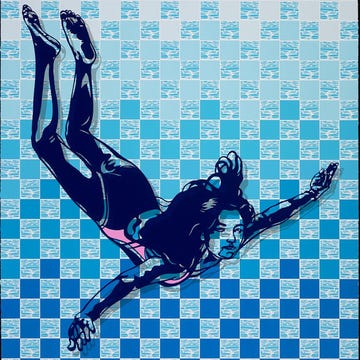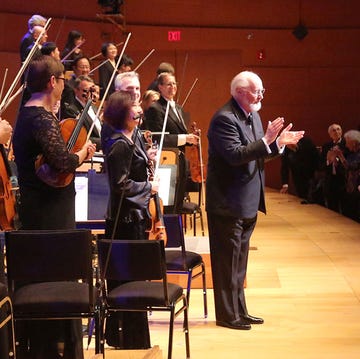Marc Maron was in San Francisco recently, headlining a one-night show at the Castro Theatre and hosting a screening of McCabe & Mrs. Miller at the Roxie. Maron hosts the podcast WTF, which has had over 1,500 episodes, and he’s been a working comic for 37 years, with a sideline in acting in movies like To Leslie, Joker, and Almost Famous and in TV shows like Glow and Reservation Dogs.
This essay was adapted from the Alta newsletter, delivered every Thursday.
SIGN UP
We’ve been friends for over 30 years, dating back to his early days in San Francisco. Maron is much more famous now than he was then, but we still want to hang out, which we do on the only day we could schedule, which happens to be in the middle of a California storm that knocked my power out for four days. And Maron has a broken foot. Earlier, he removed his medical boot and replaced the sock because “it smelled like gangrenous limb.” Friendships take many forms.
I pick him up at his hotel and ask about the previous night’s show at the Castro.
“It was great,” he tells me. “It’s kind of a little haunted, like this whole city is to me. There is a dark vibe to this place. I’ve always felt it. There’s just something...the weight of San Francisco, in terms of the history of it. In my mind, it’s like the gold rush through the Beatniks, through the hippies, through gay liberation and then the decline with the tech bros. It always struck me as a place where one comes to discover themselves or something. Right? Maybe I’m making that up.”
Despite his bum foot, our plan is to do the same things we used to do when I was a struggling writer and he was a struggling comedian: Hang out like little boys exploring the neighborhoods, pop into restaurants, coffee joints, vinyl shops, bookstores. Maybe we’ll get cigars. An entire day will go by before either of us notices.
As we drive down Valencia Street, the weather is just absurd. We head toward the Philz Coffee on 24th Street, one of our longtime haunts. The wind is whipping the palm trees back and forth. We pull over to the curb in front of a boarded-up storefront. “That’s it,” I say. “That used to be Philz.”
“Let’s get the hell out of here,” Maron mutters. “It’s kind of depressing.”
Maron lived in three locations in the city: a place in Bernal Heights, a flat on the Panhandle, and in between, an apartment on South Van Ness, the last of which we spend an ungodly amount of time trying to find in this gale. We drive around, peering out the windows. “It’s a tan brick. Two units,” Maron says vaguely.
I park the car in a driveway of what might’ve been his old place, a little two-bedroom he shared with a girlfriend and another couple until Maron took some Valium from a roommate’s desk and things got dicey. We sit there, wipers fighting the rain. “Wow,” Maron says.
Back in those days, Maron would call me up at my office and ask, “What are you doing?”
“Well, I’m working,” I’d reply. “What are you doing?” He’d tell me he was playing guitar, reading, listening to music, and watching porn. Before smartphones, this was called multitasking.
We point the car in the direction of the Lower Haight. Maron left San Francisco for New York in 1993, but whenever he returned, we’d hang out at my studio, playing guitars, talking about books and movies, and threatening to call Anton LaVey at 3 a.m.
We park on Haight and start walking (limping, in Maron’s case), pointing at old storefronts. The Horseshoe Cafe, once a media focal point for its hipster-goatee-slacker reputation, is long gone. Cheap eats like Ali Baba’s Cave and Spaghetti Western, used bookstores like the one that sold vintage toe tags from the S.F. coroner, all gone. Only Zip Zap salon, where we both got haircuts, is still there.
We find the former location of Naked Eye News & Video, the ultimate cultural information pit stop of the era. Everyone came here for VHS tapes, zines, and books. Naked Eye was owned by a guy named Steve.
“Steve was a little manic weirdo,” Maron recalls. “He was pretty knowledgeable.” Maron used to pop in and talk with him back in the day. “I always used to like to have some place to hang out for an hour. And he would sort of indulge that a bit.”
I mention that the internet was then still pretty young, so people were craving alternative information. At the time, there was an explosion of underground zines and record labels, small publishing houses, and independent magazines like The Nose, which I edited.
“Feral House changed the whole fucking game,” Maron exclaims. “Apocalypse Culture. Stuff I’d never even thought of before.”
“Amok Press,” I suddenly remember. “The Amok catalog. That was very thoughtfully curated, fucked-up information.”
“Right, but also then it was the same time as Semiotext(e). So you had Amok, Semiotext(e) with philosophy, and then you had Loompanics, and then RE/Search. That was here! That was a fucking freak show, dude. I had those books before I came here, and I was like, What am I reading?”
Our reverie is interrupted by a loud crack from a side street, and we turn to watch a tree snap its trunk and fall over onto a parked car.
We scan the buildings for the bar Mad Dog in the Fog. The address looks right; the shape looks the same. We peek into what’s now a sleek bar called Woods Lowside. It’s packed with people day-drinking on a Sunday afternoon. Some parts of San Francisco never change.
The night Maron and I met, in 1992, I took him out for a beer at the Mad Dog. I bought him a pint of Red Hook, having no idea that he was trying to stay sober. He’s now been sober since 1999 and occasionally brings up this moment of relapse on his podcast. I still feel guilty about it.
“This is a lot of ghosts,” he says, looking around. “This neighborhood. You feel it?”
A moment later, Maron hobbles into a nearby café to use the bathroom and comes out with a look of total glee. “I just had one of those San Francisco moments!” he tells me. “There’s a 10-piece jazz band, and they’re fucking nailing it.”
We walk into the coffee shop Cafe International, and it’s a 1990s time capsule: the bulletin board of flyers, the mismatched furniture, the menu written in colored chalk, the earnest conversations. The band is set up in the rear, playing Coltrane’s “My Favorite Things.” (The only difference now is that the horn section plays from charts on an iPad.)
My old friend and I get coffee and grab a sofa to soak it all in once more.•
Jack Boulware runs the newsletter What Jack Boulware Fails to Realize. He was a cofounder and an executive director of San Francisco’s Litquake literary festival. He’s currently working on a novel based on his experiences as a travel journalist. He lives in West Marin.












